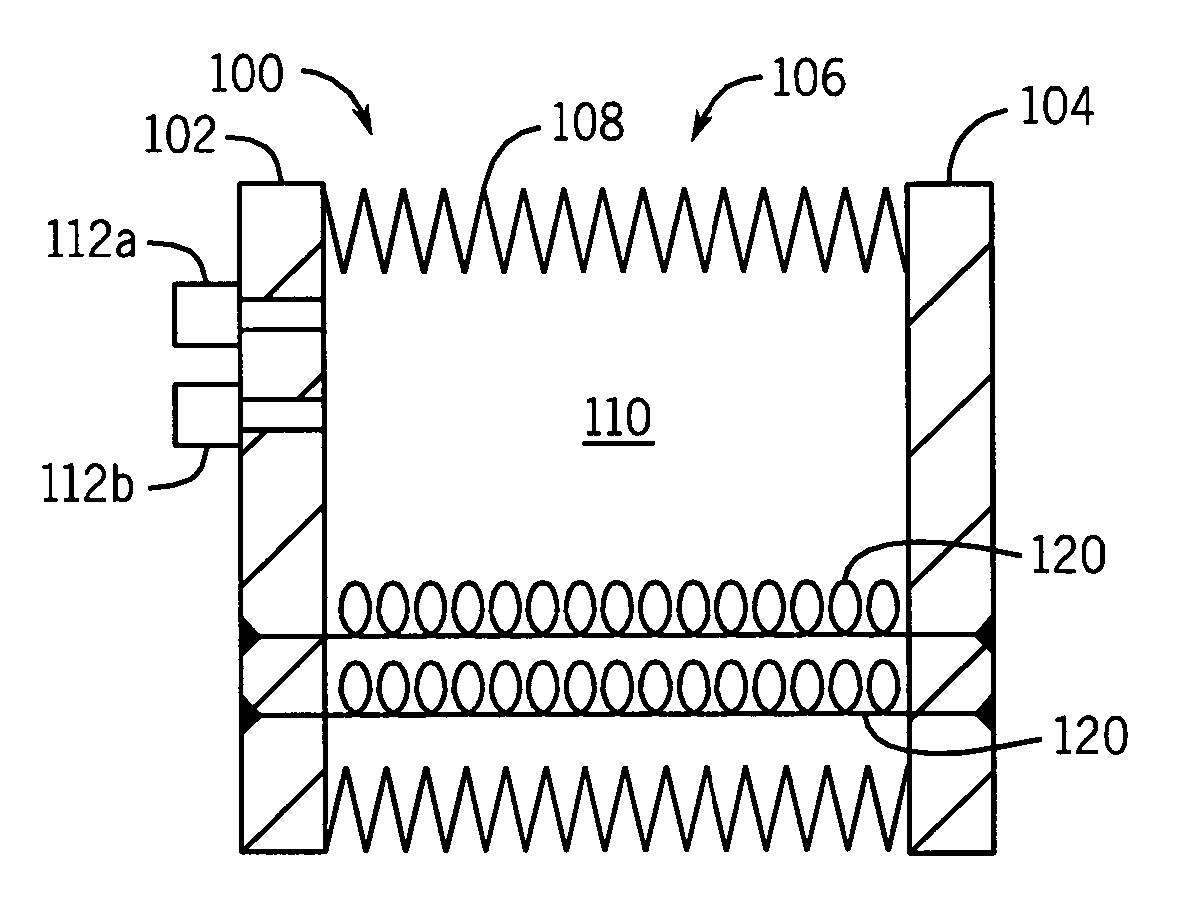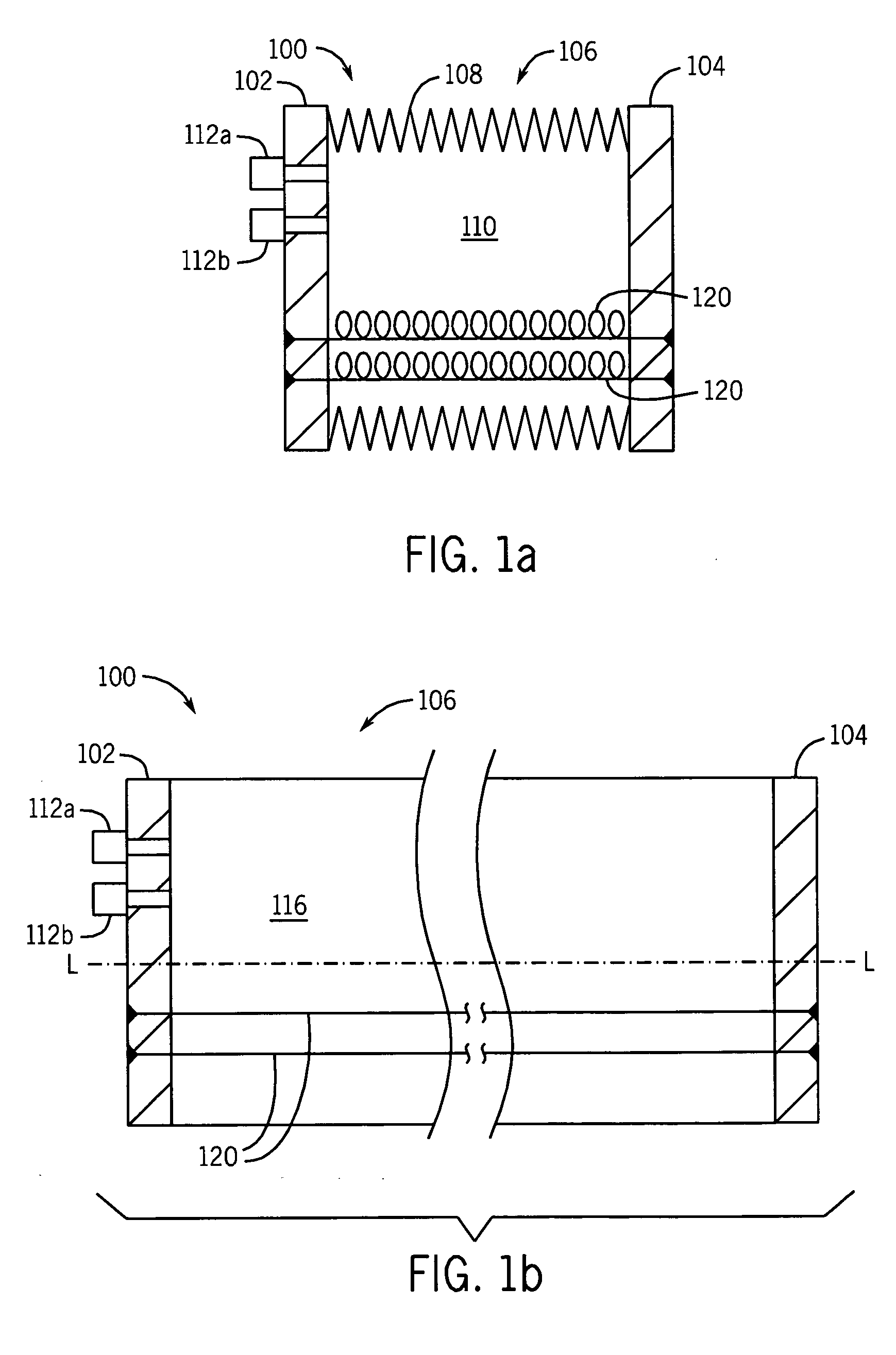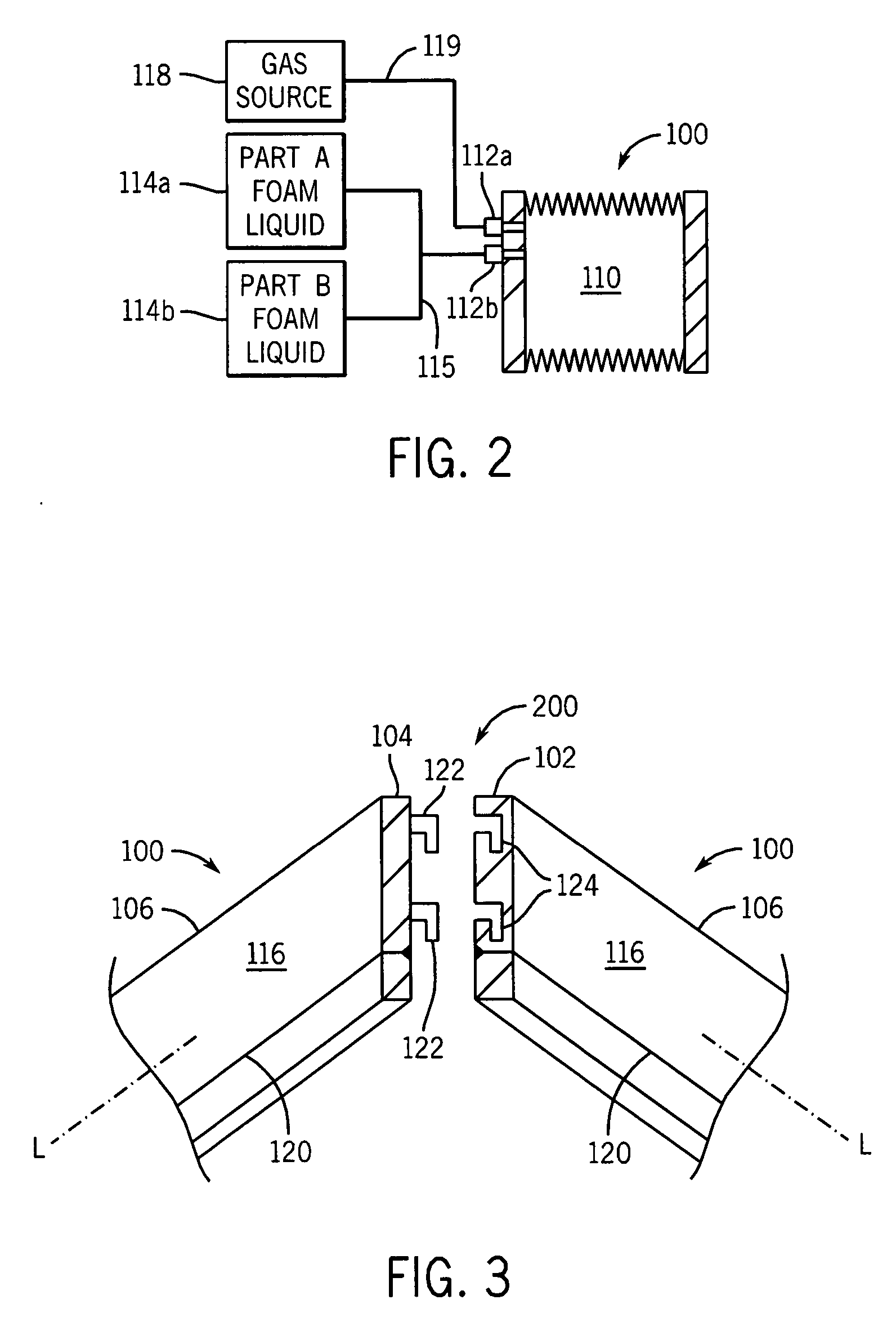Expanding devices and structures and methods therefore
- Summary
- Abstract
- Description
- Claims
- Application Information
AI Technical Summary
Benefits of technology
Problems solved by technology
Method used
Image
Examples
Embodiment Construction
[0051] Expandable foams are well known in the art. Typically such foams are made by mixing two liquid parts, which react to form foam. Although, two parts are typical, one part expanding foams are also known in the art. The reaction of the two parts is usually exothermic. The resulting foams expand in volume from up to 30 times the volume of the liquid constituents. The liquids begin foaming almost instantly and can fully cure in a matter of minutes. However, both the beginning of foaming and the curing time can be varied with the addition of additives. Additives can also be added to make the resulting foam fire resistant or retardant. The resulting foams generally have good structural (compressive, tensile, shear, and flexural) strength and are also buoyant. For the most part, the resulting foams are closed cell and will resist absorption of water. Polyurethane is an example of a material of commonly used expanding foams. For example, a 2 lb density (per cubic foot) urethane foam h...
PUM
| Property | Measurement | Unit |
|---|---|---|
| Tensile properties | aaaaa | aaaaa |
| Shape | aaaaa | aaaaa |
| Transition temperature | aaaaa | aaaaa |
Abstract
Description
Claims
Application Information
 Login to View More
Login to View More - R&D
- Intellectual Property
- Life Sciences
- Materials
- Tech Scout
- Unparalleled Data Quality
- Higher Quality Content
- 60% Fewer Hallucinations
Browse by: Latest US Patents, China's latest patents, Technical Efficacy Thesaurus, Application Domain, Technology Topic, Popular Technical Reports.
© 2025 PatSnap. All rights reserved.Legal|Privacy policy|Modern Slavery Act Transparency Statement|Sitemap|About US| Contact US: help@patsnap.com



